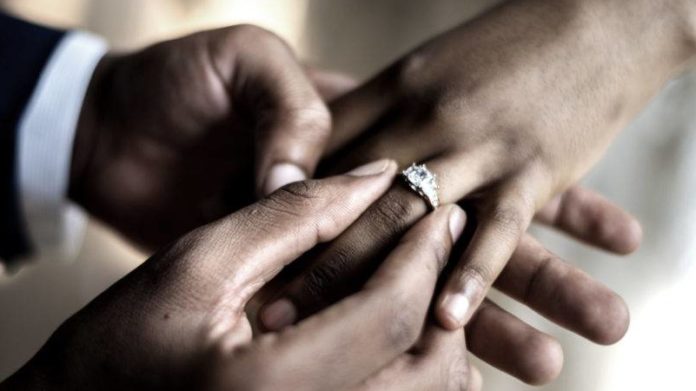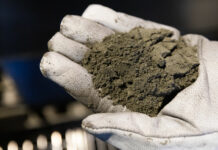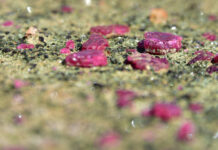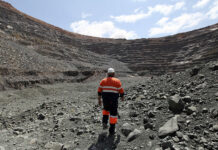
T he wedding economy is estimated to be worth $300bn annually with a host of industries, from travel and hospitality to the garment sector, hanging on to its finely-tailored coattails. Perhaps no industry is more desirous, therefore, of sweet nuptials than the jewellery sector – diamonds in particular.
The last three years have been torrid for the global diamond sector. De Beers exemplified the rut: its 2019 profit of $558m was the lowest in a decade. A sales upturn in January suggested the beginning of the long-anticipated recovery, until COVID-19 sent consumers from high street into lockdown.
Unpolished or rough diamond sales to the secondary sector, the cutters and polishers who like to inspect goods in person, was stopped in its tracks. Botswana, where De Beers convenes ten sales meetings a year with selected buyers, closed its borders. Other miners ran into similar travel bans as the pandemic tore through the world.
Yet the forces that brought the diamond sector to a halt in March might yet provide the seeds of its recovery.
The Natural Diamond Council, formerly the Diamond Producers Association, plans to spearhead a new campaign targeting loneliness by “… accessing pent-up demand for meaningful personal connections” as a result of lockdown or self-isolation.
“The way we’re putting it is that life is fleeting and, therefore, you want to make sure that the people you love know you love them,” said Mark Cutifani, CEO of Anglo American, the UK-listed company that owns 85% of De Beers. “And what better way to say that than with a diamond expressing that affection?”
This article was first published in the Mining Yearbook 2020 which is available here: https://www.miningmx.com/the-mining-yearbook-2020/
He thinks the diamond sector is due to storm back in the fourth quarter. Seasonal festivals that normally represent the high point in annual diamond sales, such as Diwali and Thanksgiving, will be given extra momentum by unsuppressed retail enthusiasm. It will resume the improvement in customer sentiment that was already underway at the end of 2019, said Cutifani. Anglo plans on spending R250m a year on marketing.
Reticence among consumers to embark on annual holidays, especially international travel, will also create more space for discretional spend – the area in which luxury products traditionally compete.
“We suspect a lot more money will be spent on diamonds than there will be on an overseas holiday,” said Cutifani. “There will likely be quite a strong recovery in diamonds because that’s what we’ve seen in the past,” he said. “Weddings have been postponed, engagements, big events have been postponed; people are now starting to celebrate and we’re already starting to see bridal demand pick up in the US.”
There’s good reason to hope so. Lucara Diamonds, a Toronto-listed firm that operates the Karowe diamond mine in Botswana, was on the tip of approving a $514m underground expansion prior to COVID-19. The company has no debt, but it has conservatively suspended its dividend programme to make way for the expansion. Capital expenditure had been limited for this year, but CEO, Eira Thomas, said the company is now running high and low scenarios on what it might be able to afford.
“I would say realistically, within the next eight weeks, we will be putting the pin in the wall on the plan of final anticipated spend,” said Thomas in a June 11 interview. “But the good thing is, either way, the plan can accommodate a minimum spend.”
As with every other diamond producer, rough sales were also impossible for Lucara in the context of border closures and lockdown. The Botswana government permitted the company to send stones to Antwerp, home to one of the world’s largest diamond bourses, but it’s no substitute for the real thing.
Lucara was additionally frustrated in its efforts to get an online diamond auction system – blockchain technology it called Clara – into fully functioning shape. Clara is ideal in lockdown as no physical selling is required – sales grew a fifth in a quarter – but a thrust to introduce third-party rough diamond sellers, aimed ultimately at growing demand, failed to materialise.
“COVID-19 really put a dampener on that just with restrictions on people and goods moving around,” said Thomas. “Some of our fellow producers just decided that they were going to hunker down and protect the balance sheet and that it’s not the time to trial a brand-new sales process.” She’s confident that third-party sales will happen though.
Thomas shares Cutifani’s optimism for the market in general. Existing production is set to shrink with the closure of Rio Tinto’s Argyle mine in Australia while the older, more economically powerful consumer cohort recognises in diamonds a private, legacy power. They may spend less on holidays and the wardrobe, given decreased social opportunity for display, but diamonds “… are things that they can invest in and get passed down through generations,” said Thomas. “They are a way to commemorate family and the importance of being together right now and what that means.”
Weddings have been postponed, engagements, big events have been postponed; people are now starting to celebrate and we’re already starting to see bridal demand pick up in the US
Post the pandemic, when life begins to resemble some level of normality, the diamond sector will emerge with more focus on its collective mind. Thomas thinks producers will channel themselves and work “more closely with the brands”. Anglo’s Cutifani also thinks structural changes will come.
As early as 2019, there was speculation De Beers intended to refine the process through which it sold rough diamonds to sightholders. Details of what De Beers is planning remain sketchy, but it could include slimming back its preferred buyers, a process it has conducted once before. “We think, ultimately, the way diamonds get to market needs to be more efficient and certainly the value needs to be protected,” he said.
“It’s an industry where our main concern is people sell diamonds too easily and don’t reflect how they are.”










